When I first started using massage with dogs I tended to see elderly dogs with signs of arthritis. They were struggling to walk as far, were stiff in the mornings or after lying down, and were generally becoming less active or sociable. The use of massage with these dogs aims to improve mobility and well being so they can look to enjoy an active life for longer.
More recently I’ve had dogs coming to me with a much wider range of conditions or problems. I’ve seen a 2 year old Labrador with terribly formed joints – possibly as a result of a poor early diet and cramped living conditions – his owner now believes he came from a puppy farm although they didn’t know that when they got him; I’ve seen an ex champion racing greyhound with problems in her neck causing pain when she turns quickly or when getting up from lying – anyone who’s had a sore neck will understand that. I’ve seen a usually healthy active staffy cross who came home lame after a walk, a 4 year old dog who’s just had surgery to remove the head of his femur as the joint was so badly damaged and causing a lot of pain, and I’ve seen a border collie with such sore stifles (knees) that she was hardly putting her back feet on the ground and had learnt to stand on her hands! Massage offers another means of care in all these cases and I’m pleased to say the vets I work with are becoming more amenable to suggesting owners try massage alongside conventional pain relief. As can be seen by the last dog I mentioned, a sore joint can change the way a dog moves about and consequently other parts of the dog get overworked. Pain killers and anti inflammatories do just as they say but they don’t address the underlying difficulties in the same way as massage.

No comments yet.